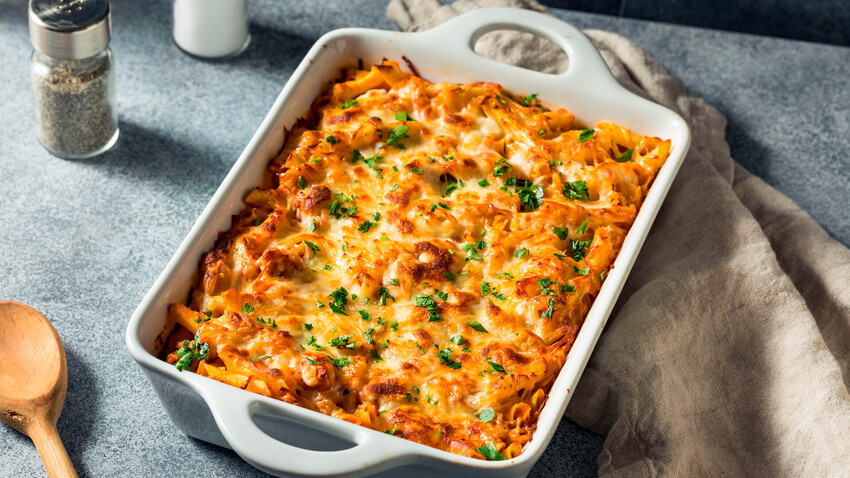
Treat yourself to a delicious, zesty pasta with a creamy cheese flavor.
Legion MediaUntil the end of the 19th century, pasta (or “makarony”) was rarely cooked in Russia for one simple reason - it was relatively expensive because of the high cost of flour from which it was made. Also, the production process was long. Therefore, at that time pasta was considered a delicacy.
In the 20th century, however, the situation changed. Pasta became widely mass-produced, and it quickly became affordable to all segments of the population. However, it didn’t have time to gain much popularity. Because of World War I and the 1917 Revolution, pasta factories fell into decline.
Pasta started to be in high demand during the Second World War as a semi-finished product. It was equally good with stews (“tushenka”), canned fish and even peas.
Navy-style pasta, or makarony po-flotski, which resembles spaghetti Bolognaise, (Check out 4 twin dishes in Russian and Italian cuisines), became one of the favorite dishes among sailors in the Russian Navy. After the War, this recipe for pasta with meat spread throughout the country when the men returned home.
The Soviet Cookbook (1952 edition) has several recipes for pasta with fillings, and includes 3 types of makaronnik or lapshevnik (lapsha means “noodles” in Russian).
Makaronnik baked with milk and eggs seems to be one of the first versions of this dish in Russia. Two other recipes are makaronnik with cottage cheese and the last one with meat. Today, we’ll cook makaronnik with meat, which can be served as a casserole or even as a festive salty pie.

1. Finely chop the onion.
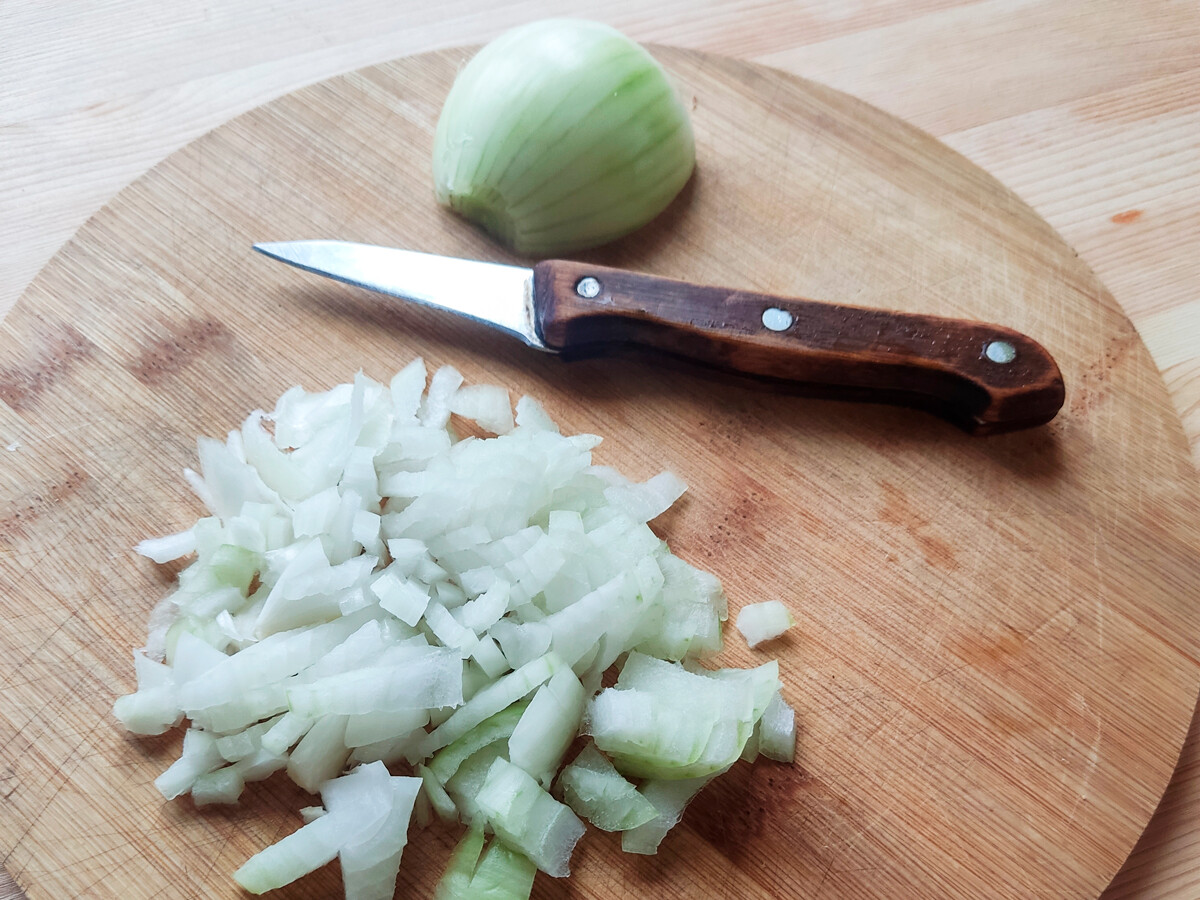
2. Press the garlic, and finely chop the parsley.
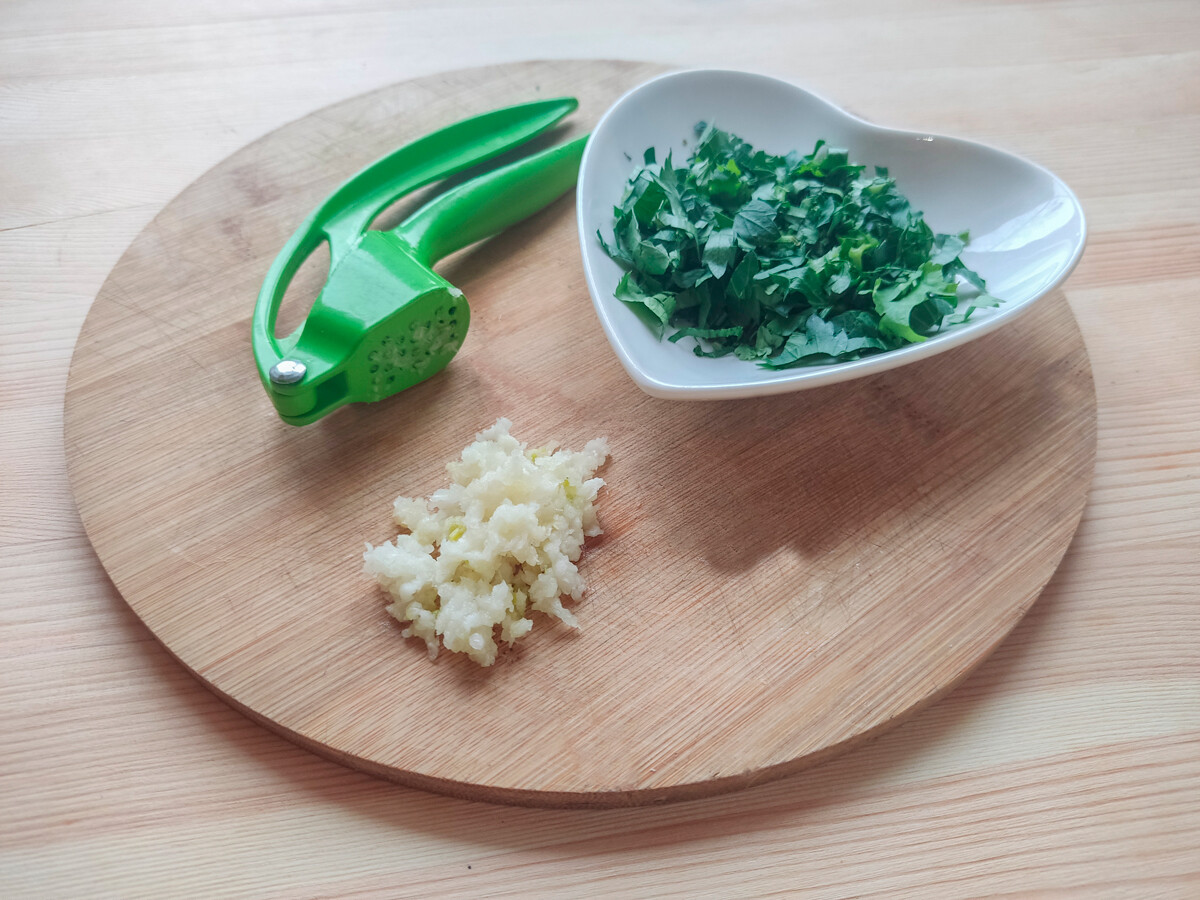
3. Fry minced meat with chopped onion in a small amount of vegetable oil until it’s ready.
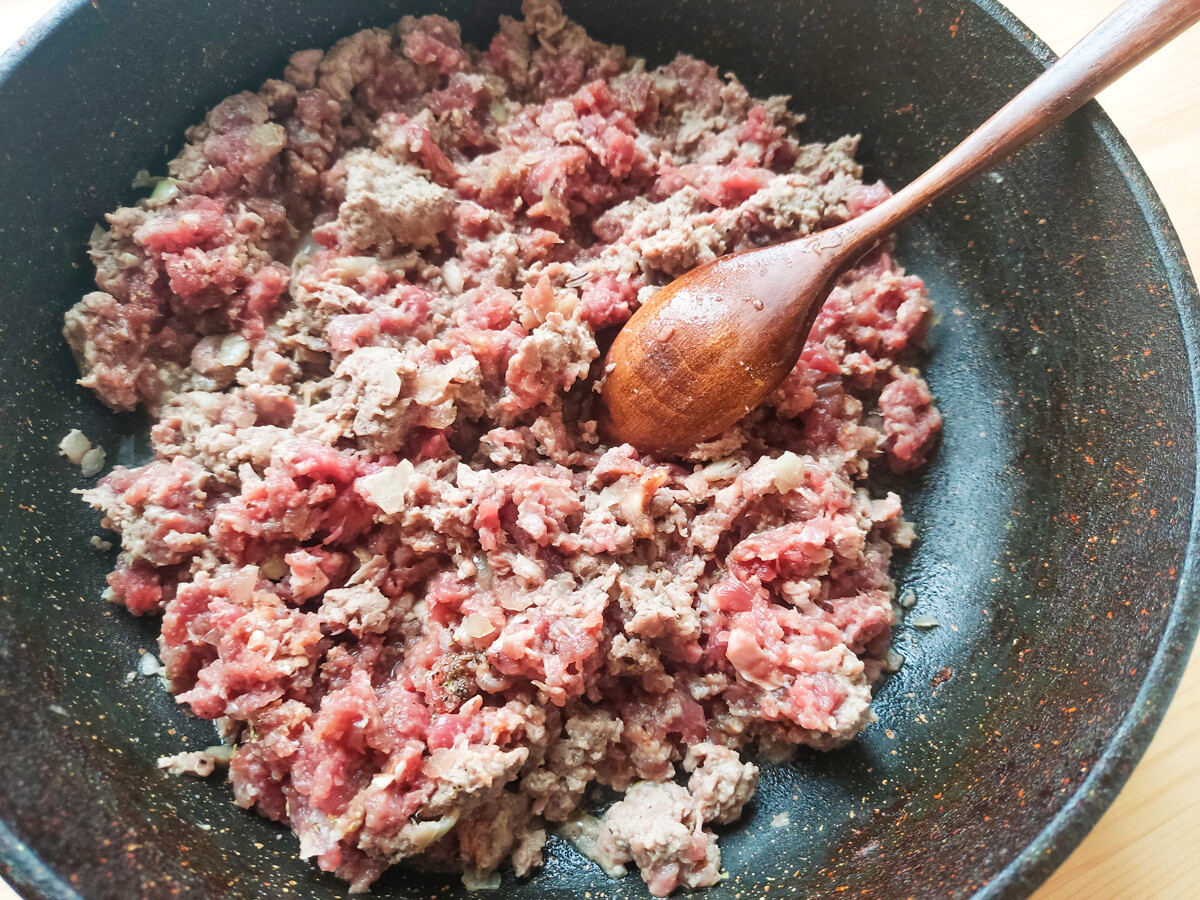
4. Add garlic, parsley, salt and pepper to the minced meat. Mix well.

5. Hold the tomatoes in boiling water for a minute, then put them into cold water and immediately peel.

6. Cut each tomato into 4-6 slices. Add it to the minced meat, add about 50 g of water, close the lid and simmer the minced meat with tomatoes until the moisture completely evaporates and the tomatoes turn into puree.
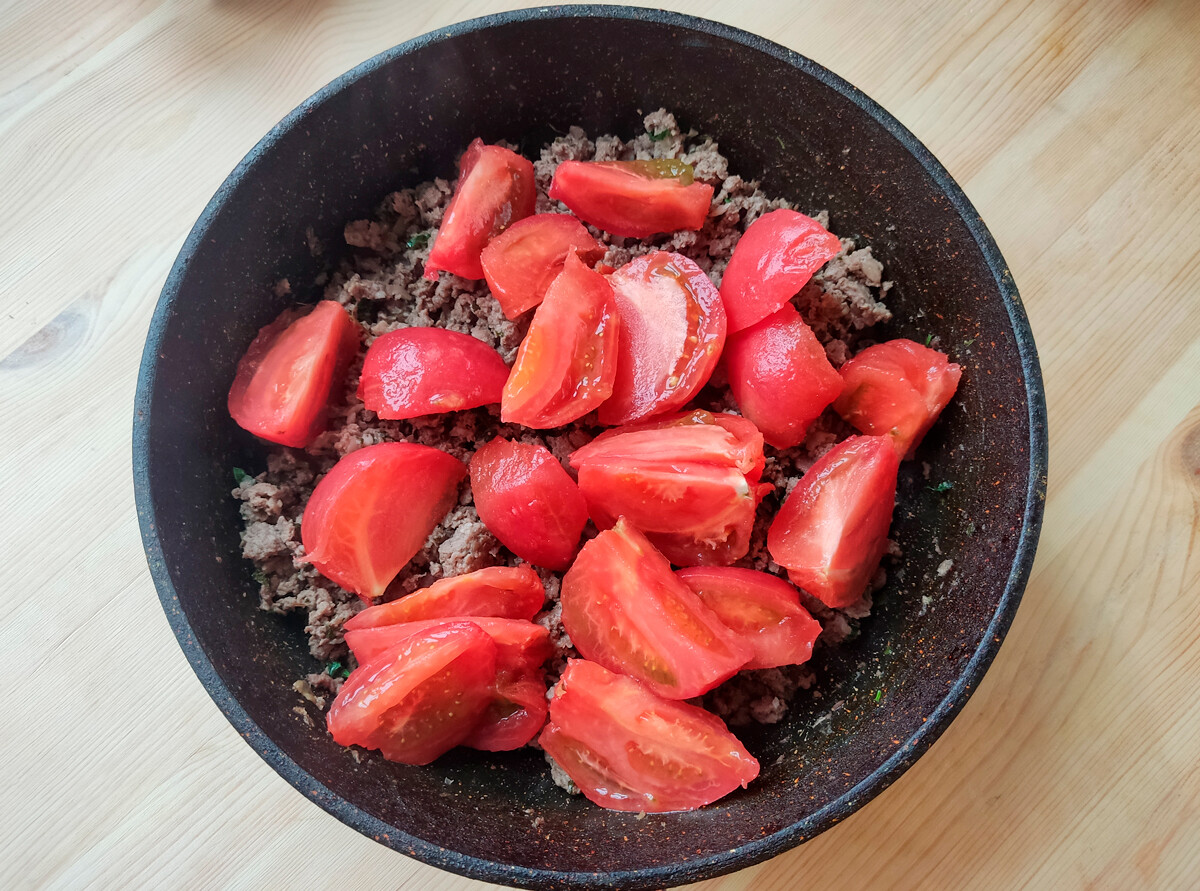
7. Turn off the heat, add 2 egg whites to the pan and mix the minced meat well. Put the pan aside.

8. Boil the pasta in salted water until half cooked. Add the butter and mix.

9. Rub the hard cheese on the smallest grater.
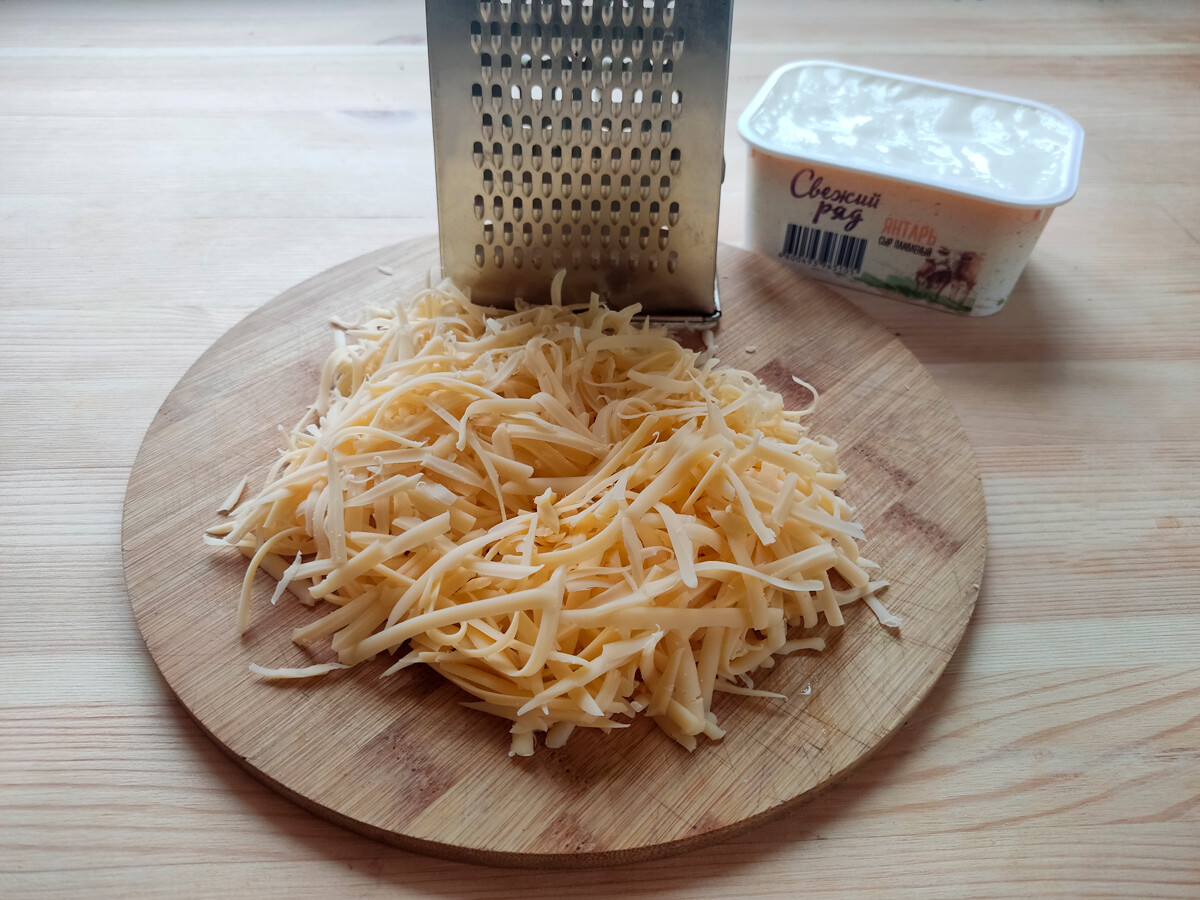
10. Bring the cream to a boil, reduce the heat to a minimum, add a tablespoon of melted cheese and dissolve it in cream. Do the same with all the melted cheese. Cool the cheese-cream mixture to room temperature.

11. Add the egg and the remaining 2 yolks into the cheese-cream mixture and mix with a whisk.
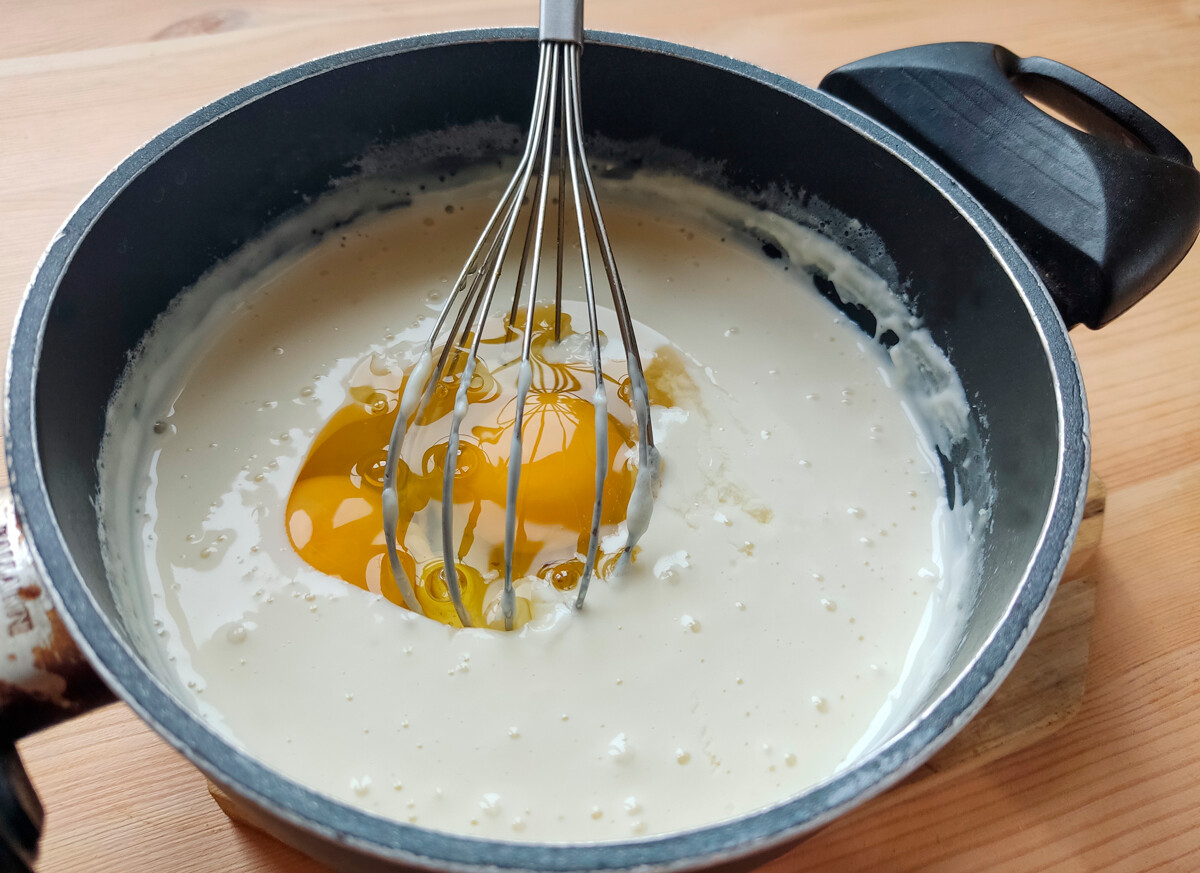
12. Grease a deep baking mold with a small amount of vegetable oil and put half of the pasta in it.

13. Sprinkle the pasta with most of the grated cheese and press the cheese well with your hand.
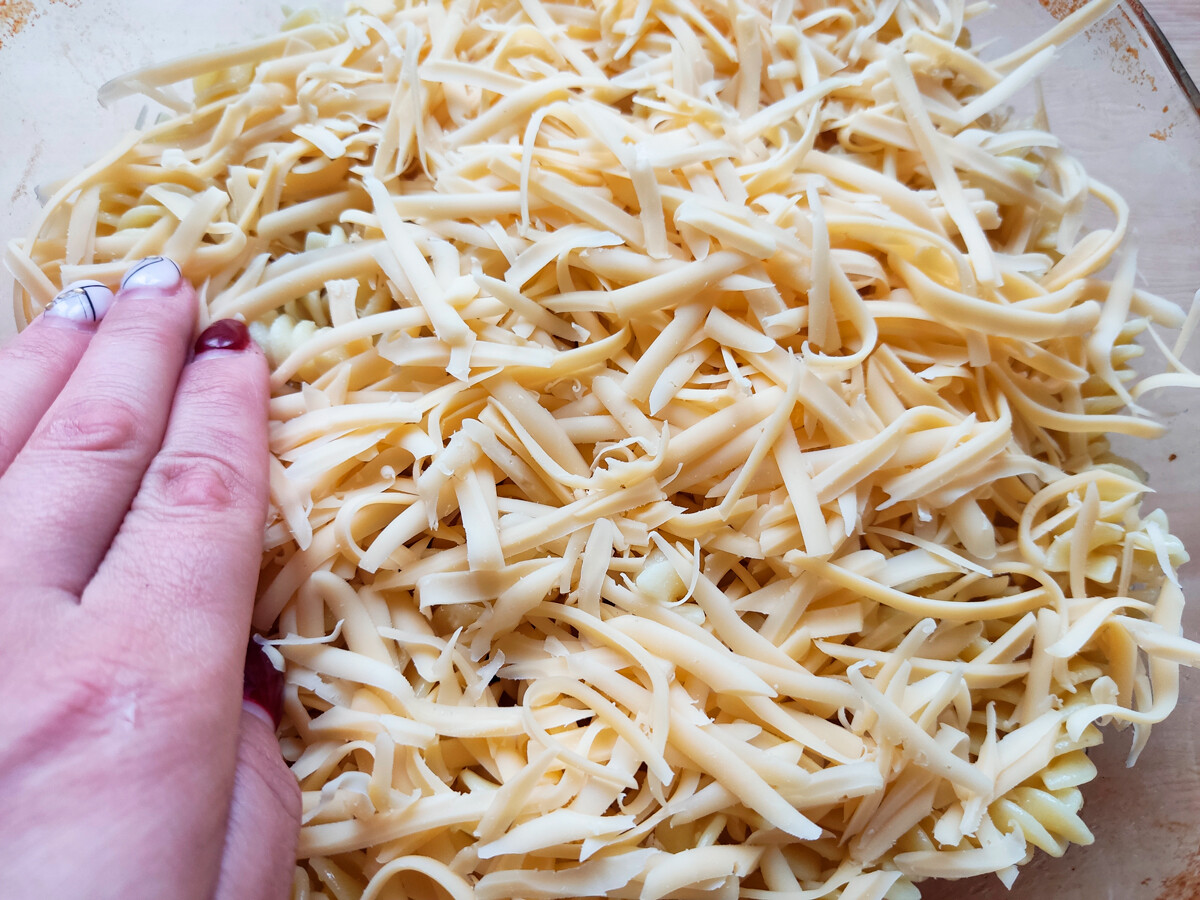
14. Add all the minced meat, level it well with a spoon.

15. Spread the rest of the pasta on the minced meat. Press well. You can add breadcrumbs on top if you want a crispier crust.
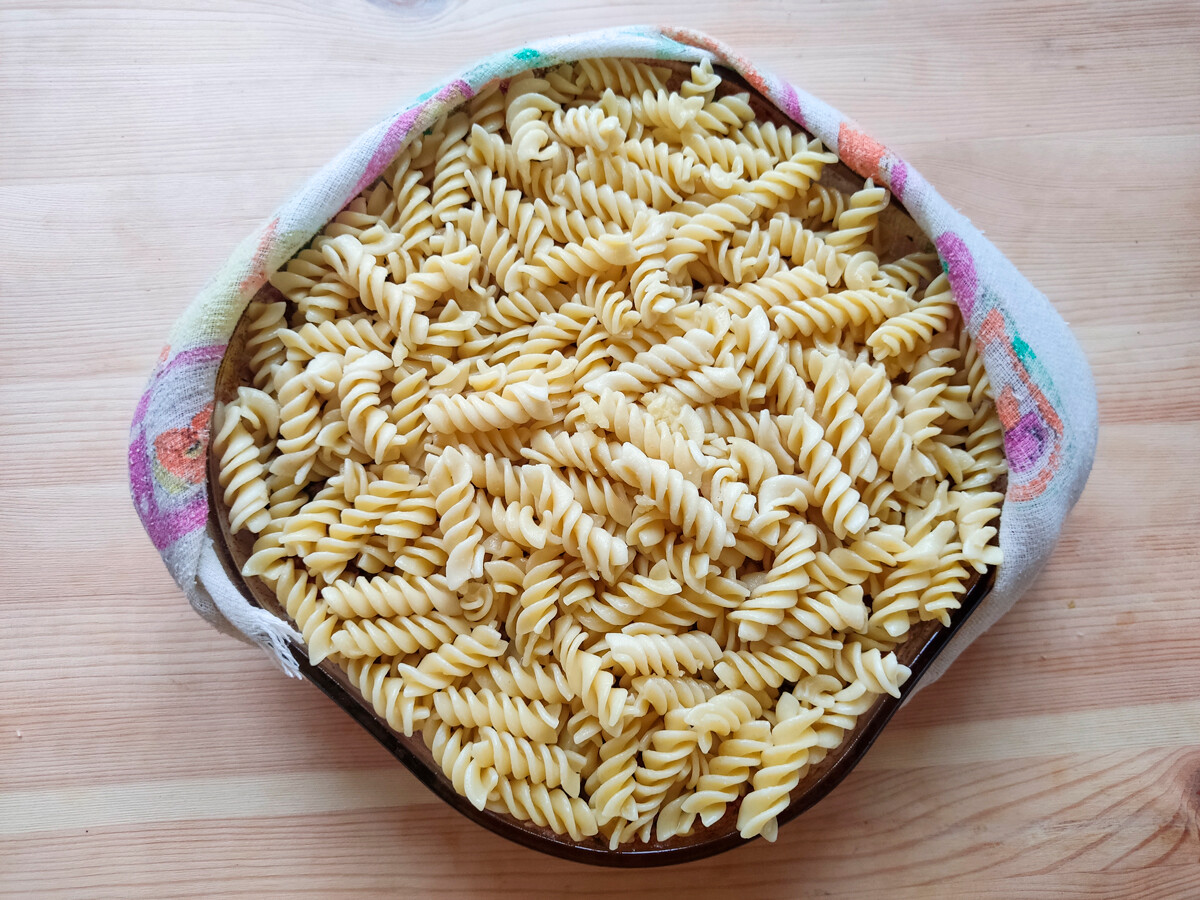
16. Pour the cheese-cream mixture.
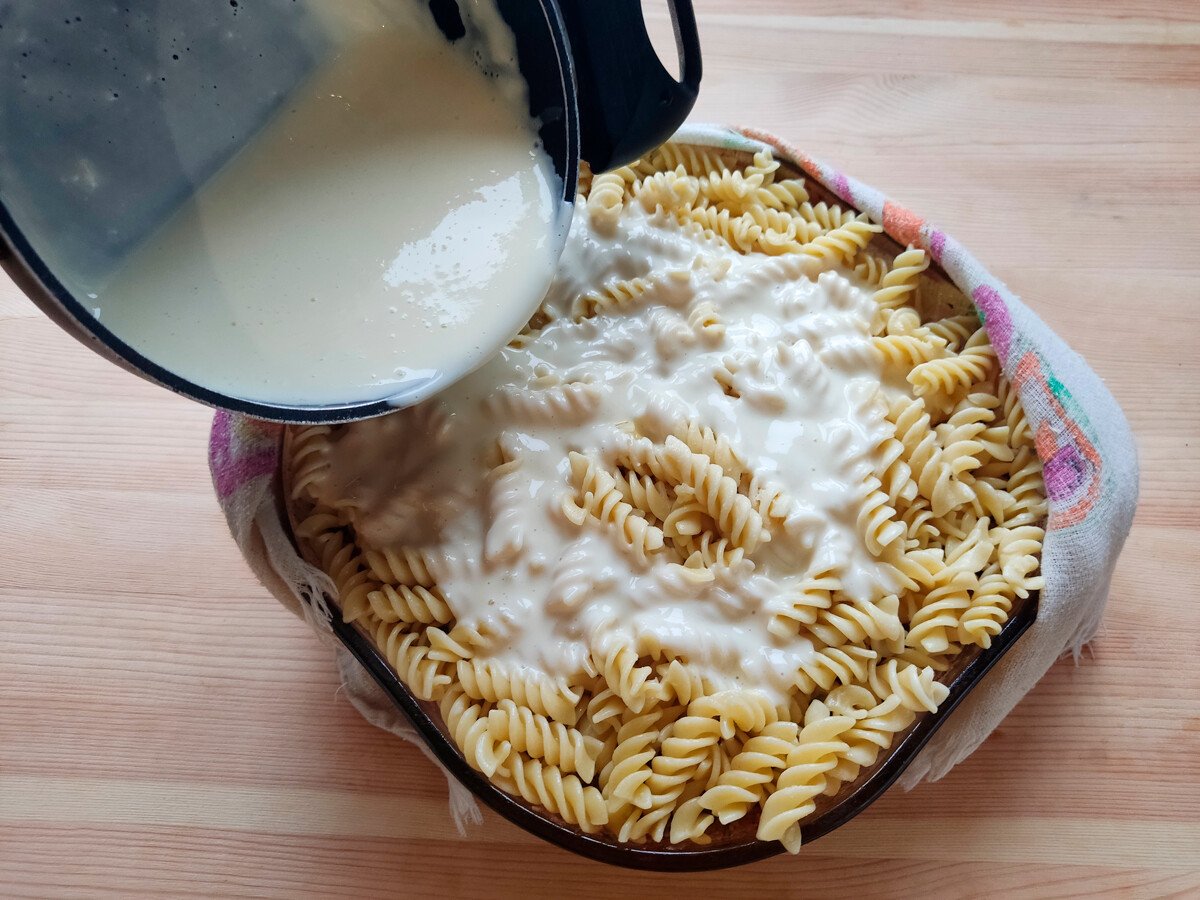
17. Sprinkle the remaining cheese on top.

18. Put the baking mold in an oven preheated to 200° C for 30 minutes. Then turn off the oven, open the door slightly and let the dish stand for another 20 minutes.
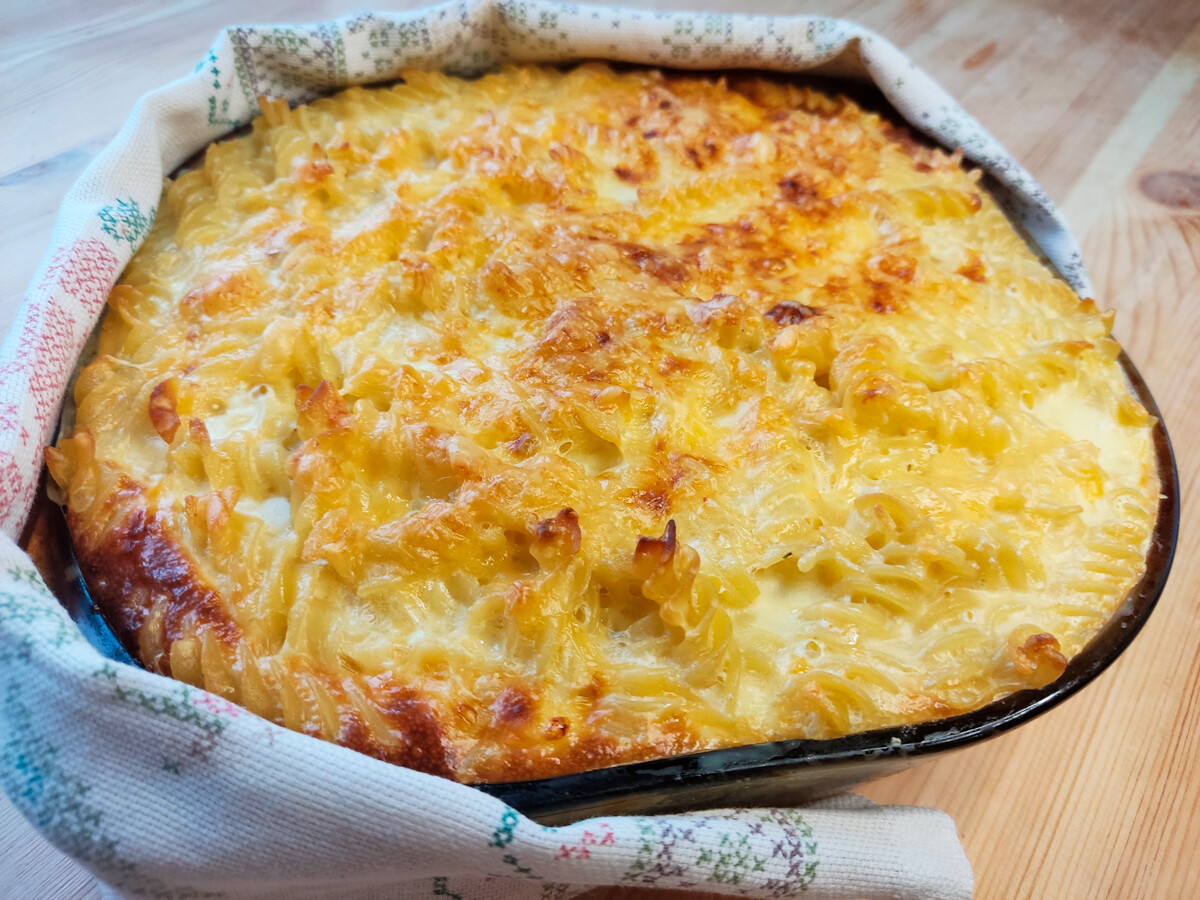
19. Your makaronnik is ready. Enjoy!
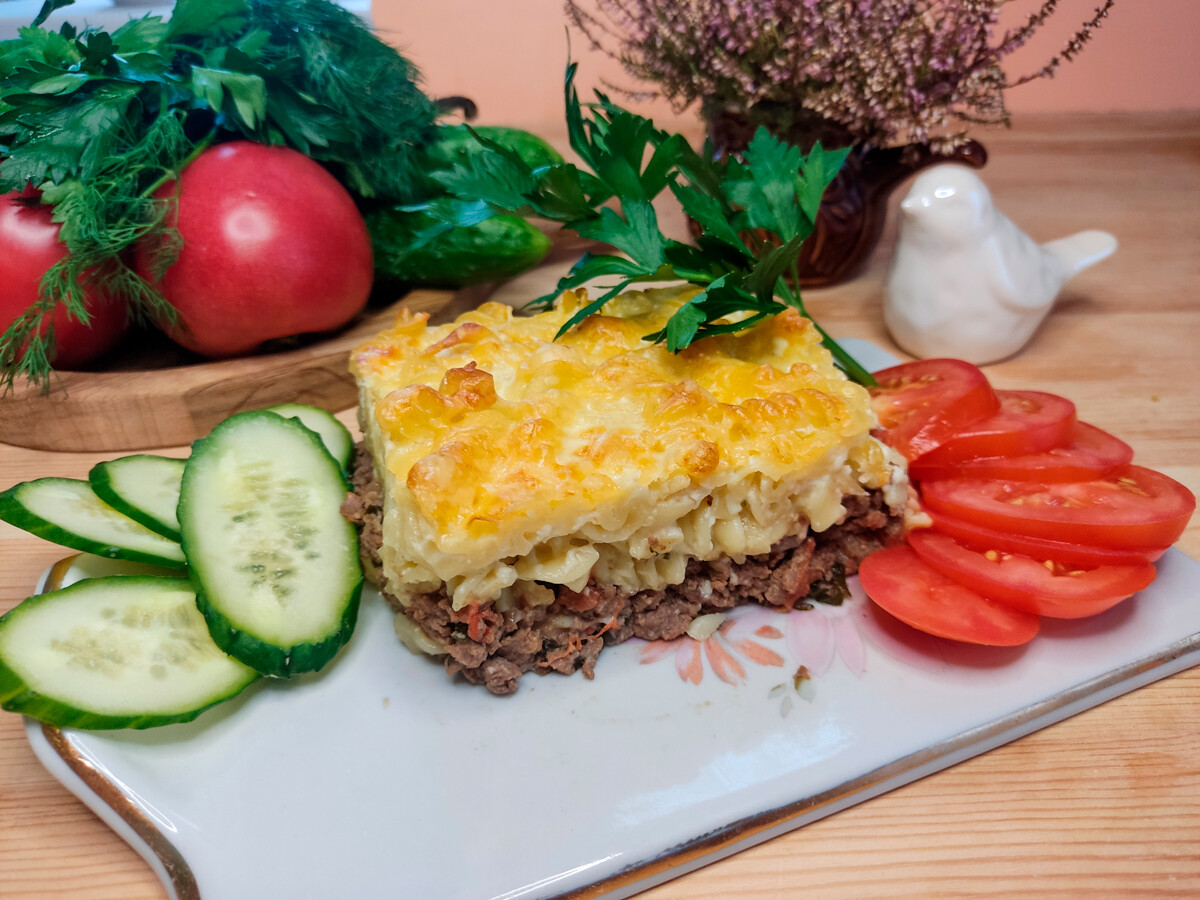
Dear readers,
Our website and social media accounts are under threat of being restricted or banned, due to the current circumstances. So, to keep up with our latest content, simply do the following:
Subscribe to our Telegram channels: Russia Beyond and The Russian Kitchen
Subscribe to our weekly email newsletter
Enable push notifications on our website
Install a VPN service on your computer and/or phone to have access to our website, even if it is blocked in your country
If using any of Russia Beyond's content, partly or in full, always provide an active hyperlink to the original material.
Subscribe
to our newsletter!
Get the week's best stories straight to your inbox